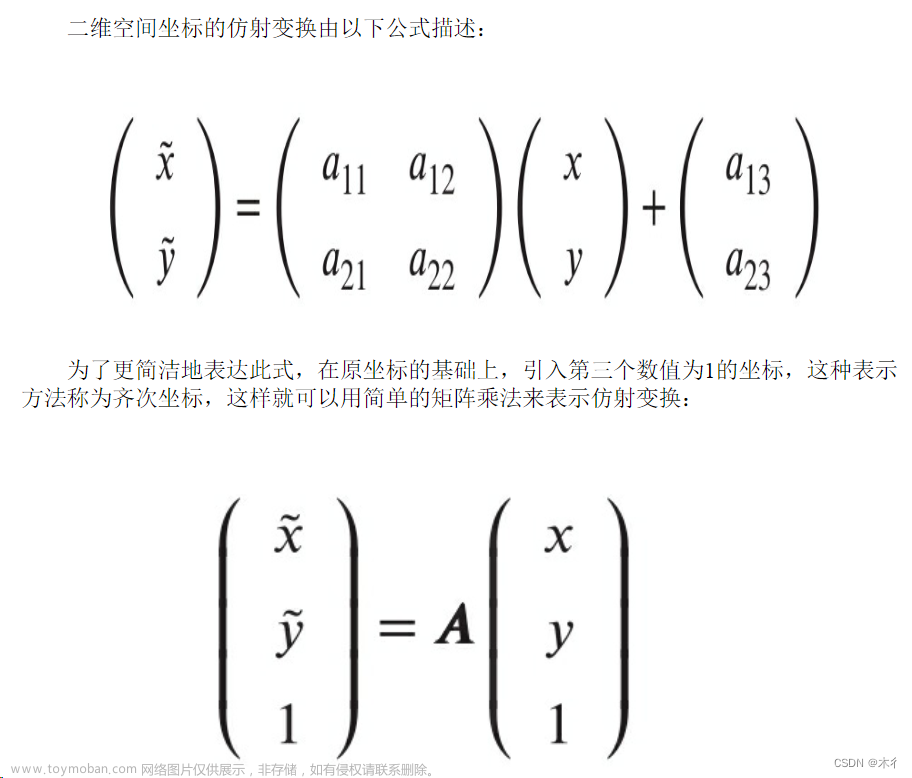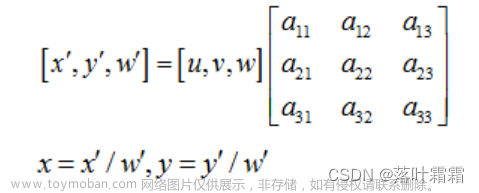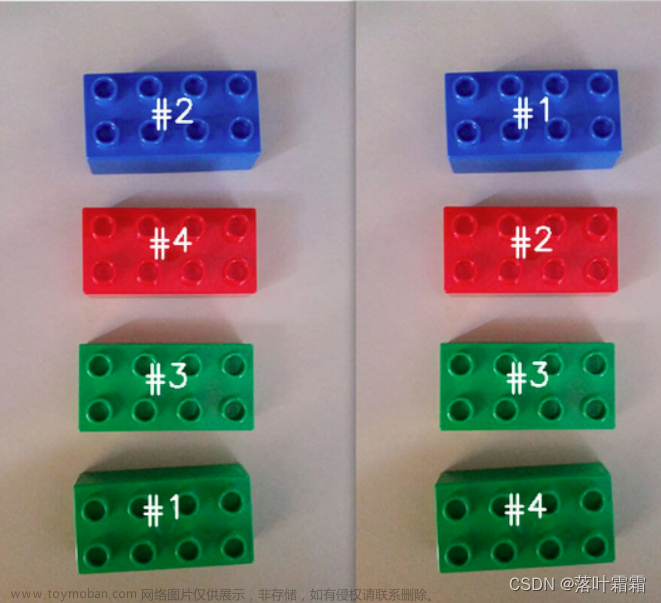
如今,图像编辑变得越来越流行,因为手机有内置的功能,可以让你裁剪、旋转和更多的操作你的图像。
这篇文章中,我们将探索和学习这些图像编辑技术。具体来说,我们将学习如何:
- 旋转图像
- 移动图像
基本图像变换操作
图像旋转和平移是图像编辑中最基本的操作之一。两者都属于广义的仿射变换。因此,在学习更复杂的转换之前,你应该首先学习旋转和平移图像,使用OpenCV中可用的函数。看看下面的图片,我们将在这里的所有转换示例中使用它。
让我们先看看下面的代码,它将用于使用OpenCV执行图像旋转。
Python
import cv2
# Reading the image
image = cv2.imread('image.jpg')
# dividing height and width by 2 to get the center of the image
height, width = image.shape[:2]
# get the center coordinates of the image to create the 2D rotation matrix
center = (width/2, height/2)
# using cv2.getRotationMatrix2D() to get the rotation matrix
rotate_matrix = cv2.getRotationMatrix2D(center=center, angle=45, scale=1)
# rotate the image using cv2.warpAffine
rotated_image = cv2.warpAffine(src=image, M=rotate_matrix, dsize=(width, height))
cv2.imshow('Original image', image)
cv2.imshow('Rotated image', rotated_image)
# wait indefinitely, press any key on keyboard to exit
cv2.waitKey(0)
# save the rotated image to disk
cv2.imwrite('rotated_image.jpg', rotated_image)
C++
#include <iostream>
#include<opencv2/opencv.hpp>
using namespace cv;
int main(int, char**)
{
Mat image = imread("image.jpg");
imshow("image", image);
waitKey(0);
double angle = 45;
// get the center coordinates of the image to create the 2D rotation matrix
Point2f center((image.cols - 1) / 2.0, (image.rows - 1) / 2.0);
// using getRotationMatrix2D() to get the rotation matrix
Mat rotation_matix = getRotationMatrix2D(center, angle, 1.0);
// we will save the resulting image in rotated_image matrix
Mat rotated_image;
// rotate the image using warpAffine
warpAffine(image, rotated_image, rotation_matix, image.size());
imshow("Rotated image", rotated_image);
// wait indefinitely, press any key on keyboard to exit
waitKey(0);
// save the rotated image to disk
imwrite("rotated_im.jpg", rotated_image);
return 0;
}
使用OpenCV进行图像旋转
通过定义一个变换矩阵M,你可以将图像旋转一个特定的角度θ。这个矩阵通常是这样的:
OpenCV提供了为图像定义旋转中心的能力,以及一个缩放因子来调整图像的大小。在这种情况下,变换矩阵如下。
在上述矩阵中:
其中
c
x
c_x
cx和
c
y
c_y
cy是图像旋转所沿的坐标。
OpenCV提供了getRotationMatrix2D()函数来创建上面的转换矩阵。
以下是创建2D旋转矩阵的语法:
getRotationMatrix2D(center, angle, scale)
getRotationMatrix2D()函数接受以下参数:
- center:图像的旋转中心:
- angle: 旋转角度:
- scale :一个各向同性的比例因子,根据提供的值将图像向上或向下缩放
如果angle是正的,图像将逆时针方向旋转。如果你想顺时针旋转图像相同的量,那么角度需要是负的。
旋转分为三步操作:
1. 首先,你需要得到旋转的中心。这通常是你要旋转的图像的中心。
2. 接下来,创建2d旋转矩阵。OpenCV提供了我们在上面讨论过的getRotationMatrix2D()函数。
3. 最后,使用在上一步中创建的旋转矩阵对图像应用仿射变换。OpenCV中的warpAffine()函数完成这项工作。
warpAffine()函数的作用是:对图像应用一个仿射变换。在进行仿射变换后,原图像中所有的平行线在输出图像中也保持平行。
warpAffine()的完整语法如下所示
warpAffine(src, M, dsize[, dst[, flags[, borderMode[, borderValue]]]])
下面是函数的参数:
- src:原图
- M:变换矩阵
- dsize:输出图像的大小
- dst:输出图像
- flags: 插值方法的组合如INTER_LINEAR或INTER_NEAREST
- borderMode:像素扩展方法
- borderValue:在边界不变的情况下使用的值,默认值为0
注意:你可以在这里了解更多关于OpenCV仿射转换的信息
旋转后的图片
使用OpenCV平移图像
在计算机视觉中,图像的平移意味着沿着x轴和y轴移动指定数量的像素。设图像需要移动的像素为tx和ty,则可以定义一个平移矩阵M:
现在,在通过tx和ty值移动图像时,有几点你应该记住。
- 为tx提供正值将使图像向右移动,而负值将使图像向左移动。
- 同样,ty值为正值时,图像会向下平移,而ty值为负值时,图像会向上平移。
按照以下步骤使用OpenCV平移图片:
- 首先读取图像,获得图像的宽度和高度。
- 接下来,像旋转一样,创建一个变换矩阵,这是一个2D数组。这个矩阵包含沿x轴和y轴移动图像所需的信息。
- 同样,在旋转中,在最后一步中使用
warpAffine()函数来应用仿射转换。
仔细阅读这段代码,看看它有多简单:
Python
import cv2
import numpy as np
# read the image
image = cv2.imread('image.jpg')
# get the width and height of the image
height, width = image.shape[:2]
C++
#include "opencv2/opencv.hpp"
using namespace cv
// read the image
Mat image = imread("image.jpg");
// get the height and width of the image
int height = image.cols;
int width = image.rows;
在上面的代码块中,您读取图像并获得其高度和宽度。
接下来,创建平移矩阵。
Python
# get tx and ty values for translation
# you can specify any value of your choice
tx, ty = width / 4, height / 4
# create the translation matrix using tx and ty, it is a NumPy array
translation_matrix = np.array([
[1, 0, tx],
[0, 1, ty]
], dtype=np.float32)
C++
// get tx and ty values for translation
float tx = float(width) / 4;
float ty = float(height) / 4;
// create the translation matrix using tx and ty
float warp_values[] = { 1.0, 0.0, tx, 0.0, 1.0, ty };
Mat translation_matrix = Mat(2, 3, CV_32F, warp_values);
对于平移矩阵,如上所述,您将需要tx和ty。在本例中,您使用宽度和高度的四分之一作为平移值。我们建议您尝试不同的值并研究它们的输出。
现在,使用warpAffine()函数将平移矩阵应用到图像上,就像对旋转所做的那样。
Python
# apply the translation to the image
translated_image = cv2.warpAffine(src=image, M=translation_matrix, dsize=(width, height))
C++
// save the resulting image in translated_image matrix
Mat translated_image;
// apply affine transformation to the original image using the translation matrix
warpAffine(image, translated_image, translation_matrix, image.size());
注意:warpAffine()是一个通用函数,可以用于对图像应用任何类型的仿射变换。只要适当地定义矩阵M。
最后的代码块将显示转换后的图像,并将其写入磁盘。
Python
# display the original and the Translated images
cv2.imshow('Translated image', translated_image)
cv2.imshow('Original image', image)
cv2.waitKey(0)
# save the translated image to disk
cv2.imwrite('translated_image.jpg', translated_image)
C++文章来源:https://www.toymoban.com/news/detail-454267.html
//display the original and the Translated images
imshow("Translated image", translated_image);
imshow("Original image", image);
waitKey(0);
// save the translated image to disk
imwrite("translated_image.jpg", translated_image);
下图显示了平移后的图像。 文章来源地址https://www.toymoban.com/news/detail-454267.html
文章来源地址https://www.toymoban.com/news/detail-454267.html
到了这里,关于Opencv 基础(四):使用OpenCV进行图像旋转和平移的文章就介绍完了。如果您还想了解更多内容,请在右上角搜索TOY模板网以前的文章或继续浏览下面的相关文章,希望大家以后多多支持TOY模板网!













